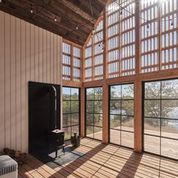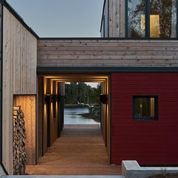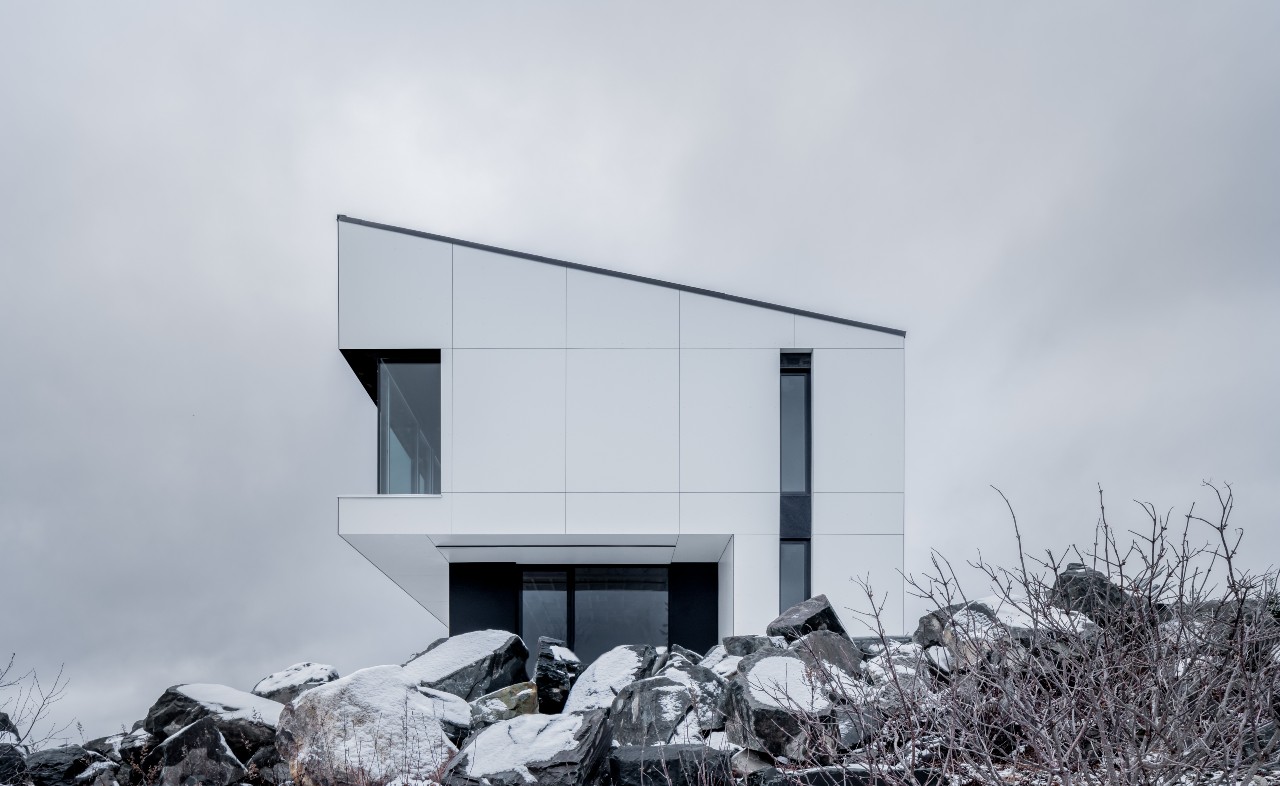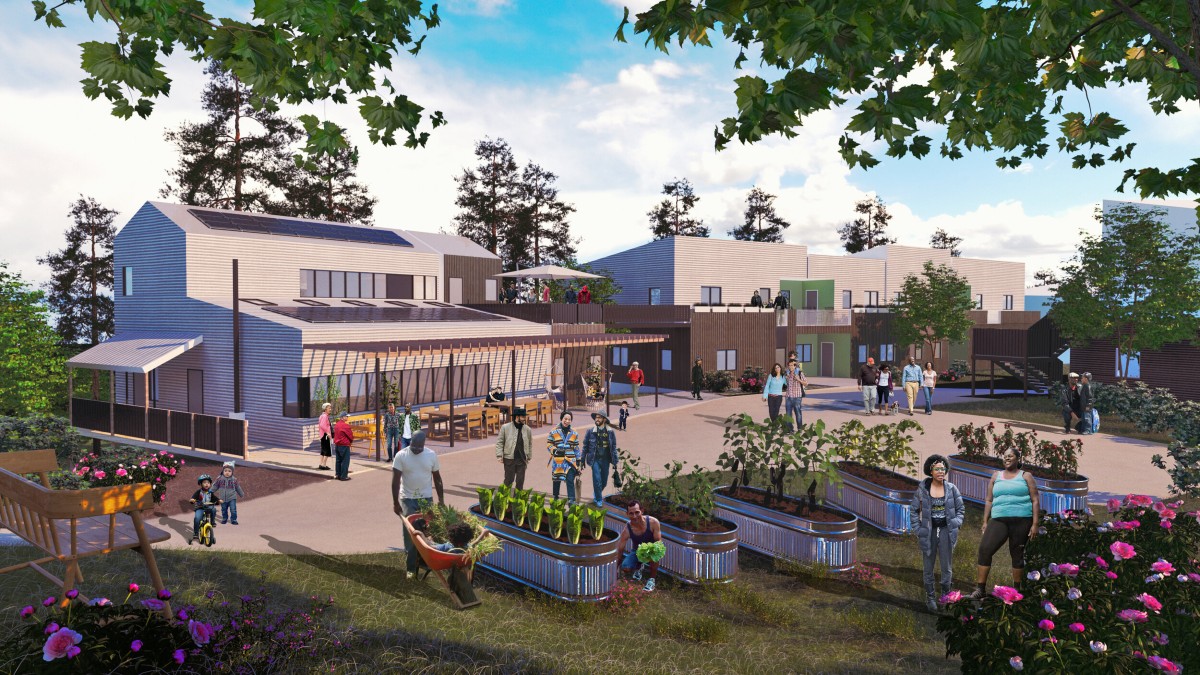Pathways: Award-winning modern design studio with a holistic approach
Pathways is a series in the Faculty of Architecture and Planning which features various paths in the design profession through the unique lens of a diverse set of practitioners. Our goal is to highlight the possibilities of careers in architecture and planning for our new alumni, soon to be graduates and prospective students. Please see the following profile and interview of Rayleen Hill (BCOM’95, BEDS’04, MArch’06) and follow the rest of the series as it unfolds!
 Rayleen Hill is the owner of RAYLEEN HILL ARCHITECTURE + DESIGN INC. better known as RHAD ARCHITECTS. Established in 2010 in Halifax, N.S., the initial focus of the studio was to design private homes, residential renovations and commercial interiors. The firm has since developed into a multi-disciplinary studio that maintains its residential focus while continuing to pursue varied genres including multiple-unit apartment developments, townhomes, public buildings, public art installations and urban gardens. RHAD Architects is a two-time winner of the Lieutenant Governor Award for Architecture and was named as one of Canadian Architect Magazine’s “Top Ten Emerging Architecture Firms in Canada” in 2017. RHAD Architects was nominated as Small Business of the year by the Halifax Chamber of Commerce in 2021.
Rayleen Hill is the owner of RAYLEEN HILL ARCHITECTURE + DESIGN INC. better known as RHAD ARCHITECTS. Established in 2010 in Halifax, N.S., the initial focus of the studio was to design private homes, residential renovations and commercial interiors. The firm has since developed into a multi-disciplinary studio that maintains its residential focus while continuing to pursue varied genres including multiple-unit apartment developments, townhomes, public buildings, public art installations and urban gardens. RHAD Architects is a two-time winner of the Lieutenant Governor Award for Architecture and was named as one of Canadian Architect Magazine’s “Top Ten Emerging Architecture Firms in Canada” in 2017. RHAD Architects was nominated as Small Business of the year by the Halifax Chamber of Commerce in 2021.
Hill has a team of six full-time staff and three contract employees including students architects. She and her team are passionate about entering into a new evolution of green building design. They are continually learning new methodologies in green building, such as Passive House, which has allowed them to develop and evolve in this sector. Some of RHAD’s latest projects include a certified Passive House residential co-housing project in Bridgewater, the first of its kind east of Montreal; a state of the art Net Zero Lab with architectural partners, Diamond Schmitt; and the redesign of a long-time landmark of Dartmouth. Hill’s concern for our future wellbeing concerning carbon and community has led RHAD to continually look for strategies to improve the built environment.
During her studies Hill was awarded the Nova Scotia Association of Architects (NSAA) Thesis Prize. Within months of starting up her small practice, she won a prestigious design competition for the Victoria Park Speed Skating Pavilion, propelling the office to grow. Prior to her graduate studies Hill earned earned CIS Academic All-Canadian status for academics and athletics (running).
Tell us about your path? How did you learn you wanted to be an architect?

The Monocular – Photo by Julian Parkinson
I was always very interested in making but not necessarily in architecture specifically. I spent my younger years very interested in drawing and fashion design and learned the craft of designing and sewing clothing items. When it came time to go to University I decided to stay close to home and took a commerce degree at Dalhousie. Although not where my passion lies, those business skills have been invaluable to running a successful architecture office. It wasn’t until I was 29 that I refocused my creative energies on the built form and attended architecture school.
Does anything stand out in your memory about the time you were studying? What were your best experiences in architecture school?
Architecture school is really tough. There is so much to learn and you are always grasping for new skill sets and understanding. I was so driven to learn these skill sets, that I, like many in the school, was really pushing my limits to produce the best work I could. It was hard work, but it was also really fun. Amongst our exhaustion, we had so many great laughs and friendships during that time.
Tell us about RHAD. Why did you start your own firm and what purpose do you hope it fulfills?
I think I have a good, intuitive skill set and it became apparent to me that it was the right time to branch out on my own. When I started the office I had relatively small goals but I’m a very driven person and the goals began to expand. After surrounding myself with other talented and driven people, the business started to take on a life of its own. When I started the office, I didn’t foresee that it was going to become the entity that it has grown into over the last several years.
Can you talk about some projects that are a good representation of your work? What is it about these projects that inspires you?
I think the houses at East Jeddore (Shift House) and Chester Basin (The Monocular) are good examples of our private residence work in recent years. We like them because they represent a clear form and a relatively small scale, which are the projects we most enjoy. Our project with Treehouse Village Ecohousing is a good representation of the work we want to see ourselves producing in the coming years – projects that are representative of sustainability and good community. We also have many pavilion and tourism projects around Nova Scotia that we are designing more recently that showcase our interest in the local vernacular and landscape.
What do you know now that you wish you had when you were starting out as a new graduate?

The Monocular – Photo by Julian Parkinson
“Architecture is an additive and infinite process of learning. You’ll never get to a point where you learn it all. There is always a new project and new skills to be obtained.”
It’s what makes it really amazing as a career because there is not one day of boredom or “the grind”. What is most important is your general ability and passion to adapt and learn. This allows you to be nimble across any type of project your journey through the architectural profession may take you. And there are no small projects!
What advice would you give to a young person considering Architecture as a career path?
I think it is good to know that Architecture is so varied and that you can almost certainly find a place for yourself within it. There is a place for people who are very technically minded, for people who like to predominantly build models, and everything in between. I think the key is to know what you like to do, and then find a path that allows you to do that.
“Someone said to me in architecture school, ‘Don’t get good at something you don’t like doing.’ Those are good words to live by.”
 Pathways is coordinated and edited by Anne Swan, Alumni and Communications officer for the Faculty of Architecture and Planning. Please reach out with story ideas or leads!
Pathways is coordinated and edited by Anne Swan, Alumni and Communications officer for the Faculty of Architecture and Planning. Please reach out with story ideas or leads!

